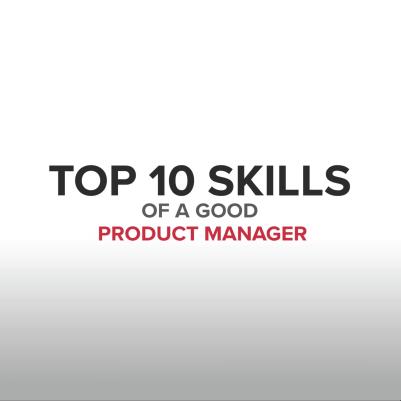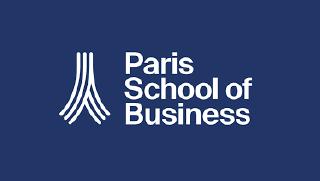Working professionals
Domains
Doctorate
Artificial Intelligence
Data Science
Gen AI & Agentic AI
MBA
Marketing
Management
Education
Project Management
Machine Learning
Doctorate
For All Domains
IIITB & IIM, Udaipur
Chief Technology Officer & AI Leadership ProgrammeSwiss School of Business and Management
Global Doctor of Business Administration from SSBMEdgewood University
Doctorate in Business Administration by Edgewood UniversityGolden Gate University
Doctor of Business Administration From Golden Gate UniversityRushford Business School
Doctor of Business Administration from Rushford Business School, SwitzerlandGolden Gate University
MBA to DBA PathwayLeadership / AI
Golden Gate University
DBA in Emerging Technologies with Concentration in Generative AIGolden Gate University
DBA in Digital Leadership from Golden Gate University, San FranciscoArtificial Intelligence
Degree / Exec. PG
IIIT Bangalore
Executive Diploma in Machine Learning and AIOPJ Global University
Master’s Degree in Artificial Intelligence and Data ScienceLiverpool John Moores University
Master of Science in Machine Learning & AIGolden Gate University
DBA in Emerging Technologies with Concentration in Generative AIExecutive Certificate
IIITB & IIM, Udaipur
Chief Technology Officer & AI Leadership ProgrammeIIIT Bangalore
Executive Programme in Generative AI for LeadersupGrad | Microsoft
Gen AI Foundations Certificate Program from MicrosoftupGrad | Microsoft
Gen AI Mastery Certificate for Data AnalysisupGrad | Microsoft
Gen AI Mastery Certificate for Software DevelopmentupGrad | Microsoft
Gen AI Mastery Certificate for Managerial ExcellenceOffline Bootcamps
upGrad
Data Science and AI-MLData Science
Degree / Exec. PG
O.P Jindal Global University
Master’s Degree in Artificial Intelligence and Data ScienceIIIT Bangalore
Executive Diploma in Data Science & AILiverpool John Moores University
Master of Science in Data ScienceExecutive Certificate
upGrad | Microsoft
Gen AI Foundations Certificate Program from MicrosoftupGrad | Microsoft
Gen AI Mastery Certificate for Data AnalysisupGrad | Microsoft
Gen AI Mastery Certificate for Software DevelopmentupGrad | Microsoft
Gen AI Mastery Certificate for Managerial ExcellenceupGrad | Microsoft
Gen AI Mastery Certificate for Content CreationOffline Bootcamps
upGrad
Data Science and AI-MLupGrad
Data AnalyticsGen AI & Agentic AI
Gen AI & Agentic AI
Masters

Paris School of Business
Master of Science in Business Management and TechnologyO.P.Jindal Global University
MBA (with Career Acceleration Program by upGrad)Edgewood University
MBA from Edgewood UniversityO.P.Jindal Global University
MBA from O.P.Jindal Global UniversityGolden Gate University
MBA to DBA PathwayExecutive Certificate
IMT, Ghaziabad
Advanced General Management ProgramMarketing
Executive Certificate
upGrad | Microsoft
Gen AI Foundations Certificate Program from MicrosoftupGrad | Microsoft
Gen AI Mastery Certificate for Content CreationOffline Bootcamps
upGrad
Digital MarketingManagement
Degree
O.P Jindal Global University
MSc in International Accounting & Finance (ACCA integrated)
Paris School of Business
Master of Science in Business Management and TechnologyGolden Gate University
Master of Arts in Industrial-Organizational PsychologyExecutive Certificate
Education
Education
Northeastern University
Master of Education (M.Ed.) from Northeastern UniversityEdgewood University
Doctor of Education (Ed.D.)Edgewood University
Master of Education (M.Ed.) from Edgewood UniversityProject Management
Accreditation Certifications
-7f4b4f34e09d42bfa73b58f4a230cffa.webp&w=128&q=75)
Knowledgehut
Project Management Masters Certification ProgramKnowledgehut
Change ManagementKnowledgehut
Project Management TechniquesKnowledgehut
Oracle Primavera P6 V18.8-7f4b4f34e09d42bfa73b58f4a230cffa.webp&w=128&q=75)
Knowledgehut
PMP® CertificationKnowledgehut
PRINCE2® FoundationKnowledgehut
PRINCE2® PractitionerMachine Learning
Machine Learning
Fresh graduates
Domains
Data Science
Management
Marketing
Data Science
Bootcamp
Offline Bootcamps
upGrad
Data Science and AI-MLupGrad
Data AnalyticsManagement
Marketing
Bootcamp
upGrad Campus
Advanced Certificate in Performance MarketingOffline Bootcamps
upGrad
Digital Marketing- Study abroad
- Offline centres
More
RESOURCES
BlogsCutting-edge insights on education
WebinarsLive sessions with industry experts
TutorialsMaster skills with expert guidance
Learning GuideResources for learning and growth
COMPANY
Careers at upGradYour path to educational impact
Hire from upGradTop talent, ready to excel
upGrad for BusinessSkill. Shape. Scale.
Experience centerImmersive learning hubs
About usOur vision for education
OTHERS
Refer and earnShare knowledge, get rewarded
Supply Chain Management Courses Online
In today’s dynamic and competitive business landscape, supply chain management is essential and indispensable to a company’s success and contributes significantly to customer satisfaction.
20(1)-70997669bd1a4ba2b565901e0eae2fa5%20(1)-de9c82be352d44bcb6a48fecf60b4465.jpeg&w=3840&q=75)
Supply Chain Management Course Overview
Logistics and supply chain management are terms you would frequently come across in the field of business. A supply chain refers to the network of organisations, individuals, activities, resources, and technology involved in producing and selling goods and services. It includes everything, from the manufacturer sourcing raw materials from the supplier to the final delivery of products to the end-user. Thus, a supply chain covers all aspects of the production/manufacturing process.
The activities at each stage of production, the conversion of natural resources into usable materials, information and material flow, human resources, and all other factors that go into the making of the finished product or service are within the supply chain. Understanding the supply chain is crucial for optimising the overall functionality of business operations, and that’s where supply chain management comes into the picture.
In today’s dynamic and competitive business landscape, supply chain management is essential and indispensable to a company’s success and contributes significantly to customer satisfaction.
Supply chain management (SCM) refers to the process of handling the flow of goods and services from their source to their destination. It includes all the processes, activities, and resources that transform raw materials into finished products for delivery to the end consumer.
Supply chain management coordinates and integrates the product flow, information flow, and flow of finances across the different stages of the supply chain within and among companies. The critical elements of SCM include planning and forecasting, purchase, product assembly, movement, storage, distribution, sales, returns, and customer service.
SCM actively streamlines a business's supply-side activities to reduce the time-to-market and deliver products to customers more efficiently while gaining a sustainable competitive edge in the market. Careful supply chain management can benefit businesses by reducing costs, increasing revenues and delivering products faster, better and cheaper.
When done right, supply chain management enables businesses to navigate market demands optimally and cater to customer expectations. Whether operating globally or locally, no company dealing with a supply chain can sustain itself without efficient SCM.
Let’s understand why supply chain management is vital to businesses:
![]()
1. Improved supply chain visibility
The supply chain forms an integral part of a business, and visibility into it has far-reaching consequences on business success. A lack of synchronisation and coordination in the workflow is often the result of the workforce's poor understanding of the activities beyond their own position in the supply chain.
It not only leads to reduced employee performance but also impacts the efficiency and productivity of the production process. SCM increases the transparency and visibility across every stage of the supply chain, helping employees across various departments communicate, collaborate and work in sync.
2. Reduced operating costs
A proper supply chain management system helps reduce operating costs by cutting down on purchasing costs, production costs and the total supply chain cost. Through efficient SCM, retailers can reduce purchasing costs by quickly distributing expensive products and eliminating holding costly inventory. Likewise, manufacturers can rely on efficient SCM to ensure reliable materials delivery to assembly plants and avoid any material shortage that could hike production costs. A proper SCM system helps manufacturers and retailers reduce the total supply chain cost while meeting customer service goals.
3. Better customer service
Customers expect that they get the correct products delivered to them in the shortest possible time and at the correct location. Not just timely delivery, customers also expect quick and efficient after-sales service with a minimal waiting time. While it may seem impossible, proper supply chain management is the key to stellar customer service, from timely delivery to efficient after-sales support. With a proper supply chain management system, businesses can have sufficient inventory in the correct warehouse location to ensure speedy product delivery to customers. SCM will also ensure prompt customer support or quick replacement of defective products.
4. Improved finances
Most importantly, proper supply chain management improves a business's financial position. With decreased supply chain expenditures, firms can dramatically increase their profit margins in the long run. Moreover, supply chain management minimises using bulky fixed assets such as warehouses, plants, vehicles and other expensive infrastructure. SCM helps redesign the entire supply chain network with optimum resource utilisation while maintaining product standards and speeding up product flows to customers. Thus, it helps increase the cash flow since firms take lesser time to make and deliver products to the customer’s doorstep.
A firm must first understand the objectives and purpose of supply chain management before it works its way into developing SCM strategies. Below we discuss the five main goals of supply chain management that a business must consider:
1. Improving fulfilment efficiency
At its core, the objective of SCM is to ensure that inventory is readily available to meet dynamic consumer demands. Matching supply and demand is crucial, and supply chain professionals must be equipped to collaborate and standardise processes to achieve maximum resource productivity and eliminate duplication of effort. With inventory levels at par with market demands, firms can reduce waste, minimise expenses, and boost supply chain efficiency.
2. Increasing flexibility
The business landscape is ever-volatile, with numerous market factors influencing how companies function and survive. Such volatility calls for the ability to adapt to change and survive the challenges of changing customer expectations, economic crises and globalisation. Hence, one of the primary goals of investing in SCM innovations is to create the groundwork for a company to scale up or down its operations in response to abrupt changes and make supply chains resilient to interruptions.
3. Creating customer value
The very reason supply chains exist is the customer - the lifeline of every business. Therefore, one of the basic objectives of a supply chain management system is to create value for the customer constantly. Creating and increasing customer value involves developing market-driven strategies based on a sound understanding of customer expectations and demands. It also applies to developing SCM approaches and capabilities to achieve higher quality customer service.
4. Increasing financial performance
One of the fundamental objectives of managing the supply chain is to improve a company’s financial performance. While traditional cost-cutting approaches typically focus on optimising inventory levels and fulfilment automation to reduce carrying, freight and labour costs, modern SCM emphasises both cost control and profit generation. Firms today apply SCM strategies to daily operations to maximise competitive advantage through increased differentiation, market penetration and sales.
Effective SCM requires simultaneous improvements in the internal supply chain operations and customer service. On the one hand, internal supply chain efficiency means a company can effectively lower its operating and sales costs while getting an attractive ROI on inventory and assets. On the contrary, good customer service typically entails higher order fulfilment rates, on-time deliveries, and a low rate of product returns.
Although market demands and operating challenges differ with supply chains, the fundamental concepts of SCM are more or less the same and require action in five core areas. The sum of these actions determines how a company optimises its SCM and the effectiveness and capability of its supply chain management system.
Production | Creating master production plans considering plant capacities, equipment maintenance, workload balancing and quality control. It essentially answers the following questions:
|
Inventory | In a supply chain, inventory serves as a buffer or safety net against uncertainty and abrupt demand shifts. Since inventory holding can be costly, the goal is to identify reorder points and maintain optimal inventory levels. It addresses the following concerns:
|
Location | The location of production and storage facilities determines the possible routes available for products to flow from their source to the final consumer. This concept of SCM addresses these concerns:
|
Transportation | Inventory movement from one supply chain location to another must be reliable and inexpensive with as low transit time as possible. Essential considerations in this area include:
|
Information | Efficient coordination and informed decision-making in SCM depend on the timely availability and accuracy of information. Thus, a company must decide:
|
Supply chain management is a critical business aspect across organisations of all types, from manufacturing, retail and transportation companies to service firms, third-party logistics and government agencies. Overall, SCM has seven core functional areas, and these are:
1. Demand planning - The process of forecasting market or customer demand using informed speculations, current test market data, statistical techniques, historical sales data and other quantitative methods. Demand planning assists companies in entering new markets, inventory management, production planning and evaluating future capacity concerns.
2. Purchasing - A company acquires goods and services to maintain the flow of input, maintain the standard and value of its products, strengthen its competitive position and reduce inventory holding costs. Purchasing in SCM implies getting the right quality in the correct quantity for the right price and at the right time.
3. Manufacturing - Manufacturing refers to producing goods for sale or use as raw materials involving tools, machines, equipment, labour, processing and other activities. While the term may include anything from manually-produced goods to high-tech production, manufacturing in the supply chain context typically refers to the large-scale industrial process of converting raw materials to finished goods.
4. Warehousing - In supply chain management, warehousing refers to the physical storage of inventory for distribution or sale. Almost every type of business uses warehousing facilities to temporarily store inventory before shipping them to individual customers or in bulk to other locations.
5. Inventory management - A critical element of the supply chain and SCM, the goal of inventory management is to have the right products at the right place and at the right time. Inventory management involves purchasing inventory, storing inventory until ready for shipment and pulling finished goods to fulfil orders.
6. Transportation - In a supply chain, transportation refers to the movement of goods from one location to another. It usually begins at the source of the supply chain with raw materials making their way to production/manufacturing plants, the subsequent movement of finished goods to warehouses and all the way to the customer’s doorstep.
7. Customer service - Another critical area where supply chain management is used is customer service. Enhancing supply chain operations with efficient customer service helps companies meet and even surpass customer expectations. Since a supply chain ends with a product reaching the customer, data from the customer service team is the key to addressing consumers' pain points and demands.
A supply chain management framework essentially refers to the dominating concepts and themes within SCM used for understanding and explaining the term. Here we will briefly discuss one of the most well-known supply chain management frameworks - the Supply Chain Operations Reference (SCOR) Model.
The SCOR model was developed by the globally-recognised non-profit organisation Supply Chain Council to assist SCM functions through practical guidelines for analysing supply chain management practices. The model is based on five main components - ‘Plan,’ ‘Source,’ ‘Make,’ ‘Deliver’, and ‘Return,’ representing the inter-related business processes in a typical product lifecycle. These five integrated processes must align with the firm’s organisational strategy, material and information flow. One of the primary applications of the SCOR model is to improve supply chain processes.
A supply chain management system typically aims to implement centralised control over the production, distribution and shipment of goods and services from the source to the final destination. SCM improves productivity and makes production processes more efficient, directly impacting the company’s bottom line.
Let’s understand SCM in the context of the following components:
Roles
Supply chain management professionals can hold various titles depending on their role in the supply chain. The job titles and responsibilities of these professionals may also differ with their qualifications, experience and the type of organisation where they work.
Some typical roles in the field of SCM are:
Commodity SpecialistSupply Chain Manager
Plant Manager
Operations Manager
Distribution Manager
Import/Export Specialist
Purchasing Manager
Project Manager
Sourcing Specialist
Supply chain strategies
![]()
A supply chain strategy is like a guideline for companies to get their products to consumers efficiently and in the minimum time possible. It ensures that the supply chain is optimised at every stage, from sourcing raw materials to manufacturing, logistics and delivery.
With the global supply chain market becoming increasingly complex, it is critical for any business to adopt proactive strategies to streamline its supply chain. In particular, manufacturing, retail, wholesale, distribution and construction industries must consider these four supply chain strategies to tackle demand surges and other uncertainties:
1. Diversify your network
Increasing supply chain disruptions means that you cannot risk relying on a single source for product acquisition. Instead, multisourcing or diversifying your manufacturing and supplier network can minimise the consequences of unexpected supply chain glitches.
2. Standardise supply chain operations
Consistency in your supply chain processes will make them more dependable and manageable, especially for firms with a globally scattered supplier and manufacturer network. Using standard or prototype platforms, plants and processes ensures compliance with regulations and facilitates seamless operations.
3. Take demand forecasting seriously
Investing in demand forecasting is paramount if you want to cut costs, reduce lead time and improve customer satisfaction. Accurate demand forecasting is not about gut feeling or intuition; it involves educated predictions of demand based on customer surveys, historical sales data analysis, social media monitoring and other methods.
4. Implement supply chain buffers
Placing buffers at strategic positions along the supply chain minimises the impact of unexpected disruptions and delays. Inventory, capacity buffer and time buffer are the three types of buffers you can employ along a supply chain:
Inventory - Keeping buffer or safety stock to protect counter demand surges or delays
Time buffer - Early arrival of resources or materials before demand
Capacity buffer - Use of spaces like production facilities and warehouses
Supply chain planning and optimisation
Dynamic markets and changing business requirements necessitate effective supply chain planning and optimisation to gain flexibility and competitive advantage. Customers today demand more access to product information, more customised products, increased flexibility and faster response time. Fulfilling these demands calls for increased focus on supply chain planning and optimisation.
Supply chain planning is the process of forecasting demand and planning materials, production, distribution, marketing and sales to meet that demand. Supply chain planning aims to achieve harmony between supply and demand while utilising every sales and revenue opportunity. Besides balancing supply and demand, the planning process allows for what-if scenario analysis and helps organisations meet demand in real-time.
The key elements of supply chain planning are:-
![]()
Demand planning - Anticipating demand by looking at market conditions, projected sales, historical data and other components.
Supply planning - Sourcing raw materials and other resources required for production.
Production planning - Resource allocation of materials, employees and production capacity with the primary goal of waste reduction and optimum inventory maintenance.
Sales and operation planning - Involves sales, marketing and other departments assessing and merging plans with operations and coordinating supply assets to meet long and short-term demands.
Supply chain optimisation includes the tools and processes for improving manufacturing and distribution supply chain efficiency and performance. These optimisation technologies leverage advanced analytics and statistical software that use historical demand data to forecast future inventory demand accurately. The goal is to balance supply and demand such that adequate raw materials are available for manufacturing and distribution to meet customer demands while remaining cost-efficient.
The predicted demand helps design supply chain manufacturing and distribution management strategy having the following phases:
Supply chain design optimisation - Focuses on demand planning, manufacturing plans, warehouse locations and product flow within the warehouse network.
Supply chain planning optimisation - Determines how product/service manufacturing and distribution will balance demand and supply while maximising profits and meeting the forecasted demand.
Supply chain execution optimisation - Deals with supply chain visibility, inventory management, transport management, order management, global trade management and real-time decision support.
Supply chain design and modelling
Supply chain design refers to a working model outlining a supply chain’s structure and network. The design helps approximate the time and expenses involved in bringing new products or services to market and allows organisations to identify potential risks and pitfalls in the supply chain. It also helps assess scenarios and optimise operations for improved costs, service and time to market.
Overall, the key objectives of supply chain design are:
Reducing inventory costs
Cutting down working capital and transportation costs
Identifying cost-saving opportunities
Increasing supply chain transparency
The goal of supply chain modelling is to realise business objectives such as on-time delivery, minimal supply cost, resilience to disruption and maximum customer satisfaction. There are six generic supply chain models with two broad categories; while one focuses on efficiency, the other is response-oriented. Any manufacturing business must adopt one of the following supply chain models:
The “continuous flow” supply chain model for stable and mature industries
The “efficient” supply chain model for industries characterised by high market competition
The “agile” supply chain model for companies that manufacture made-to-order goods with unpredictable demand
The “fast” supply chain model for industries manufacturing trendy products with a short lifecycle
The “flexible” supply chain model for companies that face seasonal demand peaks
The “custom-configured” supply chain model applies to products with multiple configurations, such as cars.
Execution and operation of supply chains
Supply chain execution and operations comprise the second part of the SCM process and come after supply chain planning.
Supply chain execution refers to the flow of tasks in the supply chain to drive the movement of goods from their source and all the way to last-mile delivery. Activities part of the supply chain are procurement, manufacturing, distribution, warehousing, fulfilment and transportation. However, numerous processes and tasks fall within the ambit of supply chain execution to ensure the seamless flow of goods within the supply chain.
On the other hand, supply chain management operations include the structures, processes and systems required to plan and execute the flow of goods and services from their source to the end consumer. These operations monitor and evaluate both internal operations and extended supply chain elements like customer relationship, supplier relationship, demand management, product development, manufacturing flow and order fulfilment.
Let’s look at some more aspects of supply chain execution and operations:
Strategic sourcing
In supply chain management, strategic sourcing refers to a procurement process involving a holistic, proactive and continuous evaluation of the sourcing activities of a business. It aims to achieve the lowest TCO (total cost of ownership) and minimal supply chain risk through data collection, market research, spend analysis, negotiations and contracting. In simple words, strategic sourcing identifies an organisation’s spend profile and supplier base to ensure that suppliers’ capabilities align with the sourcing requirements of the organisation.
Purchasing and procurement
Purchasing and procurement are often used interchangeably in the supply chain context. However, they differ significantly. Purchasing refers to the steps connected with executing a transaction between an organisation and its supplier to buy goods and services. On the contrary, procurement involves identifying, selecting and obtaining goods and services from a vendor through a tendering process, competitive bidding or direct purchase. While procurement is more comprehensive, purchasing is a subset with steps like ordering, receiving and order fulfilment.
Category management
Category management is the process of bundling similar or related products into a single business unit or category and dealing with the unit's procurement, sales and other retail activities as a whole. Procuring goods on a category level instead of a brand or product level consolidates procurement and simplifies supplier relationships while saving time and money. Moreover, category management improves the customer experience and enables easier navigation. For example, categorising groceries into dairy products, meat, frozen food, etc.
Supplier relationship management
SRM or supplier relationship management deals with managing the work with third-party vendors who supply materials, goods or services to a manufacturer. SRM involves the evaluation of manufacturer-supplier relationships and determining strategies to improve supplier performance with respect to the manufacturing business. Each vendor's performance and continuity are evaluated to determine the ones most crucial to the business. These evaluations enable manufacturers to forge better working relationships with suppliers.
Product lifecycle management
Product lifecycle management (PLM) is the way an organisation handles goods as they move through the different stages of its product life, namely, development and introduction, growth, maturity and decline. Since PLM involves both the manufacturing and marketing aspects of the products, it helps firms make informed decisions in relation to pricing, promotion, market segmentation and expansion. PLM has several benefits for the organisation, including focused marketing efforts, shorter product development times and more streamlined manufacturing.
Supplier Scorecarding
A supplier or vendor scorecard is a document that enables a business to measure the effectiveness and performance of a supplier over time. To achieve this, the scorecard breaks down supplier performance into quantifiable categories and metrics like product quality, cost, delivery and customer service. Although the metrics differ from company to company, the primary objectives of supplier scorecarding remain the same - measuring vendor performance, fostering better supplier relationships, pushing for improvements, rewarding particular suppliers and deciding which suppliers to retain.
While logistics management is a small part of the supply chain management, the latter is more comprehensive, dealing with the planning, sourcing, production, delivery and returns handling. On the other hand, logistics focuses on getting the right products to the right place and at the right time.
In a way, SCM is an improvement over logistics. Yet, the confusion between logistics and supply chain management is not new. So, let’s break down the fundamental differences between the two.
Logistics | Supply Chain Management |
(a) The concept originates in the military and dates back to the 19th century. | (a) A relatively modern concept that originated in the 20th century. |
(b) Involves specific activities in the supply chain management process. | (b) A broader term encompassing planning, procurement, manufacturing and delivery. |
( c ) The focus is on meeting customer expectations and demands. | ( c ) Emphasises creating a competitive advantage for the business. |
(d) Logistics activities are directed towards the cost-effective and efficient delivery of goods to customers. | (d) Activities in SCM control the conversion of raw materials into finished goods and their movement from the supplier —> producer —> warehouse —> retailers/consumers. |
Knowing how to optimise and improve supply chain management can be challenging for small and established businesses. As demand increases, you must amp up your supply chain management efforts to increase efficiency.
Let’s look at five best practices to improve supply chain management:
1. Improve supply chain visibility
Increasing your visibility over supply chain processes is the first step to improving SCM capabilities. The most practical way to go about this is to adopt inventory management strategies that enable real-time tracking of inventory levels at every stage of the supply chain.
2. Embrace automation
Automation plays a decisive role in maximising the efficiency of supply chain operations. From robotics and artificial intelligence to radio-frequency identification (RFID) technology, automation is one of the biggest technological advancements that can speed up supply chain operations and improve productivity.
3. Standardise supply chain processes
Effective supply chain management depends a great deal on the standardisation of processes. There are several ways to implement standardisation while increasing control and transparency, such as adopting warehouse management systems (WMS), ticketing systems, transportation management systems and enterprise resource planning (ERP).
4. Foster good working relationships with suppliers
Developing good relationships with your vendors or suppliers can help you plan better and avoid any delays or shortages in the supply chain. While it is crucial to identify dependable suppliers consistent in their performance and delivery, it is necessary to weed out suppliers that slow down your operations.
5. Invest in value chain management
For a manufacturer, value chain management (VCM) involves monitoring and managing various manufacturing components, such as procurement, production, quality control and distribution. Organised VCM is essential to maximise revenue, optimise business operations and strengthen supply chain management.
While discussing SCM, it is pertinent to understand the three flows in a supply chain - material (product), information, and financial flow.![]()
Material (product) flow - It is the flow of the physical goods or products from the supplier through to the manufacturer, warehouse and distribution centre to the consumer. As such, material flow is typically unidirectional; that is, materials flow in one direction from the supplier to the consumer. However, material flow can reverse its direction if a customer returns a product.
Information flow - Contrary to material flow, information flow is bidirectional and refers to the flow of data and information from the supplier to the consumer and back to the supplier. It facilitates constant interaction between suppliers and customers and includes information like quotations, invoices, purchase orders, delivery status, customer feedback and the like.
Finance flow - As evident, financial flow is the movement of money from the customer to the supplier or the other way round (supplier to consumer) in case of debits. Typically, the money reaches the supplier when a customer receives a product, verifies it and makes a payment. All three flows must be effortlessly managed for an effective and efficient supply chain.
Information technology (IT) is leaving a mark everywhere, and the supply chain is no exception. The application of IT to the planning and control processes of supply chain activities has grown immensely and for good reasons. With information becoming a cornerstone of modern management, planning and control, IT is a key determinant of the growth and development of supply chain management.
Let’s look at the most significant roles information technology plays in SCM:
Collaboration and coordination - IT facilitates information flow, making improving and simplifying planning, coordination and collaboration among stakeholders. Demand forecasting and order tracking would be impossible without IT.
Digitalisation of supply chain activities - An increasing number of firms are embracing computerised supply chain activities for increased productivity and competitiveness. Computers support logistics extensively, from order entry and processing to warehousing, inventory control and payments.
Decision support - Data-driven decision-making is the key to business success. IT has simplified data collection and extraction of actionable insights from complicated data sets, communicating the findings through easily understandable charts and reports.
Supply chain visibility - Information improves the transparency and visibility of supply chain activities and allows for better monitoring and management. The flow of information through various supply chain stages helps supply chain managers make strategic, data-driven decisions.
Product improvement - Constantly improving and innovating products is essential in a market where consumer demand and expectations are ever-changing. In this case, information technology plays a decisive role in corroborating the kind and extent of product improvement a business needs.
Cost reduction - The role of information technology in supply chain management becomes more prominent because it drives optimum resource utilisation. Studying historical trends and leveraging the data to improve future performance permits optimum use of assets and helps in cost reduction.
The physical flow of materials in a supply chain involves three primary stages - supply, production and distribution. Together, these stages facilitate the downstream movement of goods from the supplier to the consumer.
1. Supply - Supply refers to the number of goods or raw materials that a manufacturer/producer acquired from a third-party vendor or supplier. In other words, the physical flow of materials (products) begins from the supplier.
2. Production - The production stage involves the transformation of the raw materials into finished goods for distribution to warehouses or sale to end consumers. It is the second stage in the physical flow of materials.
3. Distribution - Finally, supply chain distribution is about how a business gets its products to customers. A brand might sell its products directly to customers or use a third party for distribution purposes.
The supply chain typically comprises seven components: planning, sourcing, inventory, production, information, transportation and return.
1. Planning | Every aspect of the supply chain requires careful planning, from the supply of materials to manufacturing, storage and delivery. |
2. Sourcing | Sourcing means purchasing raw materials from a supplier and ensuring that their quality and price are acceptable. |
3. Inventory | A crucial element of the supply chain, inventory refers to all the items a company stocks and includes raw materials, semi-finished and finished goods and other materials. |
4. Production | It is the stage where the raw materials are transformed into finished goods. Production depends on other supply chain elements like sourcing, market demand and inventory. |
5. Information | Proper flow of information is a vital component of supply chains and is bidirectional, moving from the supplier to the consumer and vice versa. |
6. Transportation | Transportation is another critical element that refers to the point-to-point movement of raw materials and finished goods within the supply chain. |
7. Return | Meeting customer demands is not enough when you have poor customer service. Handling returns forms the last leg of the supply chain and is key to sustaining customer loyalty. |
The Five-Step Process of Supply Chain Management
Now that we have discussed the key supply chain processes, let’s briefly go thoroughly the five-step process of effective supply chain management:
1. Plan | Planning is the strategic part of SCM that outlines the key factors and metrics involved in the fulfilment of the objectives of the SCM process. |
2. Source | This stage focuses on identifying the most reliable suppliers for sourcing raw materials so that the supply chain faces no disruption. |
3. Execute | The execution stage involves the implementation of the existing plan in the form of finished products ready for testing and delivery. |
4. Deliver | The delivery stage is where the right quantity of product/service reaches the right place and at the right time. |
5. Return | Returns handling involves review and quality check of returned products while also helping in inventory management. |
Technology enables more connectivity, increases access to information, improves data analytics, and provides more streamlined storage. It has changed supply chains for the better and strengthened organisations with manifold benefits.
Let’s look at how technology is a blessing for logistics and supply chain management:
1. Better access to information
Supply chain technology facilitates data connectivity and eliminates information silos among various supply chain players. Improved access to information drives communication, promotes visibility and minimises inefficiencies.
2. Increased insight
Supply chain technology facilitates data-driven decision-making through improved insights. These decisions, directly and indirectly, impact the supply chain's overall performance and productivity.
3. Improved agility
Addressing problems and developing solutions are much faster when executives and supply chain managers have better insights into the supply chain processes and systems. It is a crucial capability in today’s fast-paced business environment.
4. Better collaboration
Technology helps organisations coordinate better between individuals and departments. A highly competitive and technology-enabled supply chain with network-wide collaboration is more agile and reactive towards omnichannel consumer demands.
5. Enhanced customer experience
Technology is crucial to meet changing customer demands, especially in the digital age when customers are more informed than ever. The agility, accuracy and visibility supply chain technology provides go on to enhance the customer experience.
Online supply chain management courses offer significant benefits over offline ones.
Let’s look at why earning a supply chain management certification online can be a better deal than attending physical programs:
Flexibility - An online course in supply chain management offers ample flexibility in terms of time and learning pace. Whether a student or a working professional pursuing an SCM certification, you can always find an online program that fits your schedule.
Convenience - Online supply chain management courses are more convenient than campus-based programs. You do not need to travel to attend classes and can easily access lectures and study materials from the comfort of your home, no matter where you are.
Cost-effective - An online supply chain management program is relatively cheaper than its offline counterpart. Moreover, you can save on transportation and accommodation expenses since you do not need to attend physical classes.
Global networking - Most importantly, online platforms offering supply chain management certification are an excellent opportunity to network with professionals, peers and industry experts from around the world. The exposure and experience you gain through these interactions are invaluable.
If you’re aspiring to build a career in supply chain management or related fields, an MBA in Logistics and Supply Chain Management is a great option.
The semester-wide syllabus of an MBA in Logistics and Supply Chain Management is given in the table below:
Semester I | Semester III |
Principles and Practices of Management | Distribution Management for Global Supply Chain |
Managerial Economics | Enterprise Resource Planning |
Business Statistics and Quantitative Techniques | Applied GIS and Spatial Data Analytics |
Business Communication | International Logistics and Management |
Financial Reporting, Statements and Analysis | Port and Airport Management for Logistics |
Public Private Partnership And Port Development | Elective 3 |
International Trade Procedures and Documentation | Elective 4 |
- | Elective 5 |
- | Internship |
Semester II | Semester IV |
Global Environment of Business | Containerisation and Multimodal Transport |
Fundamentals of Logistics and Supply Chain Management | Supply Chain Risk Modelling and Management |
Procurement, Storage and Warehouse Management | Elective 6 |
Financial Management | Elective 7 |
Human Resources Management | Final Research Project and Viva |
Production and Operations Management | Comprehensive Viva Voce |
Elective 1 | - |
Elective 2 | - |
According to MarketsandMarkets Research, the global supply chain management market size is forecasted to grow from USD 28.9 billion in 2022 to USD 45.2 billion by 2027 at a CAGR of 9.4%. The remarkable growth in retail and e-commerce and the demand for increased visibility into supply chain processes have been cited as the key drivers of the market growth.
If we go by Google Trends, the search volume for the keyword “Supply Chain Management Course” in India has seen an overall upward trend in the past five years. Business survival largely depends on efficient supply chain management as much as it does on addressing infrastructural limitations like costly raw materials and labour, incompetent professionals, poor risk management and inadequate technical support. As the country’s economy recovers from the damages of the COVID-19 pandemic, it is more important than ever to strengthen the supply chain infrastructure.
With evolving customer expectations and a volatile market, effective SCM is the key to balancing demand and supply in the economy. Since SCM has a broad scope encompassing manufacturing, warehousing, IT, logistics, transportation and other aspects, it creates numerous job opportunities across many sectors. The job roles are not only diverse but also rewarding, with ample growth opportunities.
The growing scope of SCM in India is primarily due to the burgeoning global players in the Indian market, rapidly expanding product variety, ever-changing customer expectations and the digital revolution. It implies higher demand for supply chain management professionals across industries and a simultaneous rage for courses offering supply chain management certification.
The estimated average base salary of a Supply Chain Specialist in India is INR 607,765 per year.
The average pay of a Supply Chain Specialist in India primarily depends on the candidate’s experience, skill set and job location (city).
City-wise salary
INR 520,523 | |
INR 771,390 | |
INR 625,631 | |
INR 420,000 | |
INR 727,610 | |
INR 550,000 |
Experience-wise salary
INR 484,333 | |
INR 698,384 | |
INR 1,048,047 | |
INR 1,200,000 |
Skill-wise salary
INR 638,713 | |
INR 700,000 | |
INR 650,000 | |
INR 517,473 | |
INR 560,000 |
The estimated average starting salary of a Supply Chain Specialist in India is INR 484,333
The estimated average base salary of a Supply Chain Specialist in the United States is USD 61,243
The average pay of a Supply Chain Specialist in the United States depends on factors like experience, skill set, city and the employer.
City-wise salary
USD 52,176 | |
USD 69,710 | |
USD 67,613 | |
USD 61,581 | |
USD 77,097 | |
USD 72,445 | |
USD 55,000 |
Experience-wise salary
USD 55,096 | |
USD 59,087 | |
USD 65,927 | |
USD 66,462 | |
USD 70,644 |
Skill-wise salary
USD 62,094 | |
USD 59,998 | |
USD 60,778 | |
USD 61,081 | |
USD 16.30 per hour |
The starting salary (entry-level) of a Supply Chain Specialist in the United States is USD 55,096.
Management Course Instructors
Learn From The Best
Learn from industry leaders in our management courses, offering real-world insights and expertise. Be the best by learning from the best in the industry.
12
Instructors

Siddhartha Roy

Director, Product Manager
Siddhartha is currently working at JioSaavn as a Director of Product, managing India's largest digital music streaming service.

Pratik Agarwal

Vice President
Pratik helped to set up the SaaS investing practice at SAIF Partners and Playment, Fareye, Haber, Goodera, Sensehawk and Toppr.

Mythreyee Ganapathy

Product Leader
Mythreyee is an alum of Bentley College with 15+ years of experience as a Programme Manager of digital products.

Anshumani Ruddra

Group Product Manager
I am a cross-functional team leader who is neck-deep into product development and excited by the unique opportunity to build products.

AJ Boelens

Client Director
AJ is a leading practitioner and academic for customer-centric strategy and innovation in Asia.

Jeremy Glassenberg

Product Manager
Jeremy, a post-graduate from CMU, is an experienced product leader of over 13 years, currently working as a product manager at DocuSign.

Deepak Singh

Head of Products, Group PM
Deepak has experience with both 0-to-1 and products at scale across industries. He also runs a newsletter 'The Growth Catalyst'.

Gautham Krishnan

VP, Products
Gautham is an ISB Alum with 9+ years of experience across PM leadership positions in companies such as Snapdeal, honestbee & Accenture.

Tamara Sanderson

Co-founder of Remote Works, Ex-IDEO
Co-founder at Remote Works, Tamara has 15+ years of experience across IDEO, Google, Automattic and Oliver Wyman

Anthony Conta

Senior Product Designer
An award-winning product design leader, Anthony has over 8 years of experience and is currently a Senior Product Designer at Vimeo.

Mohan Ram

Go-To-Market Lead - APAC
Mohan has 12+ years of experience and is currently working at DigitalOcean, and heads Global partnerships.

Gaurav Joshi

Head of Design
Gaurav Joshi has been associated with UI/UX design Housing.com, he led product design including design direction.
Management Projects
Learn by Doing
Apply management theories to practical scenarios, enhancing your leadership skills. Be prepared to tackle real-world problems with our online management courses
2+
Projects
Work in groups and identify HR challenges in organisations. Solve industry problems by conducting research, collecting primary and/or secondary data, presenting information, analysing and interpreting it
Problem-solving
Critical thinking
Teamwork
Planning
Research Design
Communication and Presentation
Capstone project - HR
Work in groups and identify HR challenges in organisations. Solve industry problems by conducting research, collecting primary and/or secondary data, … Know More
Skills learned
HR Analytics
Problem-solving
Critical thinking
Teamwork
Planning
Research Design
Communication and Presentation
Create a work force plan for a given organisation using resource mapping and resource utilisation strategies and make recommendations and suggestions to increase the effectiveness of the workforce.
Employee retention
Stakeholder management
Consulting and influencing
Workforce Planning and Deployment
Create a work force plan for a given organisation using resource mapping and resource utilisation strategies and make recommendations and suggestions … Know More
Skills learned
Effective workforce planning
Employee retention
Stakeholder management
Consulting and influencing
This Capstone Project is divided into four parts and will test your skills based on different real-life scenarios and challenges you may face as a healthcare professional. Each part of the project will allow you to think of the challenges in healthcare from a multi-dimensional, systems perspective, and provide novel, innovative solutions.
Inventory Management in Hospitals
Application of Regulatory Licences for Healthcare Organisations
Financial accounting and capital budgeting
Evaluation of architectural briefs
Material management skills
Quantitative and Qualitative Research
Data-Driven decision making
Segmentation, targeting and positioning for healthcare organisations
Performance management in healthcare organisations
Analysing the relationship between society and health outcomes
Staffing and recruitment for a healthcare organisation
Capstone project - Health Care
This Capstone Project is divided into four parts and will test your skills based on different real-life scenarios and challenges you may face as a hea… Know More
Skills learned
Managerial Skills
Inventory Management in Hospitals
Application of Regulatory Licences for Healthcare Organisations
Financial accounting and capital budgeting
Evaluation of architectural briefs
Material management skills
Quantitative and Qualitative Research
Data-Driven decision making
Segmentation, targeting and positioning for healthcare organisations
Performance management in healthcare organisations
Analysing the relationship between society and health outcomes
Staffing and recruitment for a healthcare organisation
Success Stories
What Our Learners Have To Say
upGrad is an amazing option if you're looking to upgrade your skills
Special thanks to Dr. Jankhana Khuman and upGrad team for being a great help throughout my learning journey.

Mathivanan
HR Executive
4 Years of Experience
Their user-friendly platform made learning from industry experts super easy
I learnt a lot from the amazing faculty that upGrad brought in for teaching us.

Vatsalya Jaiswal
Assistant Manager
7 Years of Experience
I got the job I wanted within a week of getting my certificate
All I can say is, learning from upGrad really helped me to put myself on top of everyone at least in my domain.

Bharath Shetty
Live Ops Coordinator
9 Years of Experience
Management Free Courses
Start Learning For Free
Begin your management journey with our free best management courses, laying the foundation for advanced skills.

Free Certificate
How to be a Successful Business Analyst
You will learn about the responsibilities of a business analyst, the various skills needed, along with insights on how to prepare for a business analyst’s interview.
1 Hours

Free Certificate
Introduction to Design Thinking
Learn the fundamentals of design thinking and how it helps organizations to innovate, along with the application of design thinking through case studies.
2 Hours

Free Certificate
Investing in the Modern Era
Learn about investing and various investment options available in the market along with how to build and manage a healthy portfolio
2 Hours

Free Certificate
Introduction to International Business Environment
Learn about globalisation and internationalisation along with its benefits and challenges faced by companies and professionals involved in international business.
3 Hours

Free Certificate
Introduction to Entrepreneurship
Learn the defining and behavioral characteristics of a successful entrepreneur and also understand the difference between a manager and an entrepreneur.
3 Hours

Free Certificate
Digital Innovations in the Financial System
Learn about the evolution of digital finance and its benefits along with the applications of AI and blockchain technologies in the financial services industry.
6 Hours

Free Certificate
Introduction to Ratio Analysis
"Learn ratio analysis for businesses, exploring diverse ratios. Calculate, interpret, and analyze real company performance, focusing on profitability ratios. "
5 Hours

Free Certificate
Introduction to Digital Banking
Learn about the importance of a bank in the financial system while understanding how to assess banking tasks and identify those that can be digitized.
6 Hours

Free Certificate
Building Digital Transformation Strategies
Learn the fundamentals of digital transformation and how someone can build and implement digital transformation strategies.
1 Hours

Free Certificate
Introduction to Guesstimates
Learn to solve a given guesstimate along with some tips and tricks that will help you to efficiently find the answer while solving it during an interview.
2 Hours

Free Certificate
Introduction to Consumer Behaviour
Learn to decode consumer behavior and gather insights with the help of consumer behavior models and various case studies.
2 Hours

Free Certificate
Financial Analysis
Learn about the key operating levers needed to evaluate a company's performance and understand the importance of managing working capital.
7 Hours

Free Certificate
Introduction to HR Analytics
Learn HR analytics and understand how you can leverage the power of analytics to analyze HR data and manage the most valuable assets of your organization.
4 Hours
Management Videos
You Might Like To Watch


Understanding Your Market | Product Management Tutorial | upGrad
56:52
4,048 views


Building Artefacts from User Research | Product Management Tutorial | upGrad
59:57
893 views


How to create a good Product Requirements Document | Product Management Tutorial | upGrad
51:44
1,981 views


Minimum Viable Product | Basics & Detailed Perspective of MVP | Product Management Tutorial | upGrad
42:42
64,556 views


Top 10 Skills Of A Product Manager | Product Management | UpGrad
6:50
2,20,455 views


Product Management Certification Program | Product Management Course Demo | upGrad
3:30
5,769 views
Management Blogs
You Might Like To Read

Management is a lucrative career and a dream come true for many. If you want to know all about the scope and nature of management, keep reading this article.

Nitin Gurmukhani

If you want to pursue a course in management, this article will be of great help. Let us find out all about the management process, its features, and functions.

Kamal Jacob

Project management case studies offer valuable insights and best practices for project managers. Explore them to learn the secrets of project success in various industries.

Keerthi Shivakumar

Whether you have work experience or not, you can pick from different career opportunities after studying management. Read this article to find out your options.

Kamal Jacob

This article will help you explore various management project topics to start working on one right away. Our list of management project topics has enough options for you to choose from

Dilip Guru

Wondering how much salary a BBA degree is worth in India? Here's taking a look at the various roles you can pursue with a BBA and the salary you stand to earn.

Kamal Jacob
Learner Support and Services
How Will upGrad Supports You
upGrad Elevate: Virtual hiring drive giving you the opportunity to interview with upGrad's 300+ hiring partners
Job Opportunities Portal: Gain exclusive access to upGrad's Job Opportunities portal which has 100+ openings from upGrad's hiring partners at any given time
Career Mentorship Sessions (1:1)
High Performance Coaching (1:1)
Interactive Live Sessions with leading industry experts covering curriculum + advanced topics
Personalised Industry Session in small groups (of 10-12) with industry experts to augment program curriculum with customized industry based learning
Live Discussion forum for peer to peer doubt resolution monitored by technical experts
Peer to peer networking opportunities with a alumni pool of 10000+
FAQ on Supply Chain Management Courses
1. What is a supply chain?
A supply chain refers to the network of organisations, individuals, technology and processes involved in creating a product or service and its final delivery to the end consumer.
2. What is supply chain management?
Supply chain management involves the planning and managing activities involved in the flow of goods and services from the raw material stage to the finished products.
3. What is logistics?
In commerce, logistics refers to the planning and execution of efficient storage and transport of goods from their source to the final destination.
4. What are the five supply chain management processes?
The five supply chain management processes or components are - plan, source, make/execute, deliver and return.
5. What are the six types of supply chain management?
The six types of supply chain models are - the fast model, the continuous model, the agile model, the efficient model, the flexible model and the custom-configured model.
6. Why is supply chain management important?
Supply chain management is important to businesses for several reasons, including increased visibility into supply chains, reduced costs, better customer service and improved finances.
7. What are the challenges of SCM?
Some of the biggest challenges companies face in SCM include quality customer service, cost of raw materials, labour and energy, supplier relationship, risk management, unforeseen delays, incompetent personnel and volatile markets.
8. What skills do I need to build a supply chain career?
The top skills to get hired for SCM jobs are knowledge of IT and automation, project management, awareness of market trends and consumer behaviour, negotiation abilities and communication skills.
9. Is there a typical career path in supply chain management?
There is no defined career path in SCM since your employment opportunities will depend on various factors like experience, skills, industries, organisations and the type of employers.
10. What kind of jobs are available for supply chain management graduates?
Some common job roles for SCM graduates include Commodity Specialist, Business Analyst, Distribution Manager, Operations Manager, Project Manager, Plant Manager, Purchasing Manager and Sourcing Specialist, to name a few.
11. Is an internship important for a career in SCM?
Yes, an internship is extremely valuable if you’re aspiring to build a career in supply chain management. Internships give you hands-on experience and industry exposure in SCM, logistics, transportation and other relevant skills.
12. Is supply chain management a good career choice in India?
Yes, supply chain management is a good career choice in India. The demand for supply chain management professionals is high as organisations across various sectors realise the pressing need to strengthen the supply chain infrastructure for improved efficiency.
13. What do SCM professionals do?
The responsibilities of supply chain management professionals depend on the specific job role. For example, production/operations professionals carry out product/service design, facility layout, location planning, capacity planning, demand forecasting and so on. On the contrary, procurement/purchasing professionals identify and analyse sources of materials, select and evaluate suppliers, negotiate contracts, place orders and acquire materials.
14. What are the core areas in supply chain management?
Purchasing/procurement, production/operations and transportation/logistics are the core areas in SCM.
15. What is the average starting salary for SCM professionals?
While the average starting salary of an SCM professional in India is INR 484,333, entry-level positions in the United States pay around USD 55,096 on average.


upGrad Learner Support
Talk to our experts. We are available 7 days a week, 10 AM to 7 PM
Indian Nationals
Foreign Nationals
Disclaimer
The above statistics depend on various factors and individual results may vary. Past performance is no guarantee of future results.
The student assumes full responsibility for all expenses associated with visas, travel, & related costs. upGrad does not .





















-ae8d039bbd2a41318308f8d26b52ac8f.svg)




